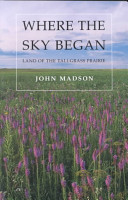native plants
Generally speaking, the folks who visit botanical gardens fall into two categories. The first includes local residents who can best be described as garden enthusiasts - the sort who visit monthly, weekly or even daily to follow the lifecycles of favorite trees, shrubs and plants and can spend countless hours observing the diurnal operations of flowers or of the birds who come and go as a year progresses. The second group, generally larger and often much larger, includes local residents who stop by the gardens only when
A pre-holiday visit with our grandchildren and their parents earlier this month gave me the opportunity to return to one of my favorite Seattle-area attractions: The Bellevue Botanical Garden. Covering 53 acres with long, easy trails and generous, well-tended plant displays, the facility also includes expressive watershapes in a variety of forms. I took an immediate
My work as a landscape architect is usually recognized for two distinguishing characteristics - first for the inspiration I draw from my friend and mentor, the late, great Brazilian environmental artist Roberto Burle Marx, and then for my driving ambition to preserve and restore habitats, as expressed in projects throughout South Florida and across the Florida Keys and various islands in the Caribbean and the West Indies. This is why seeing the project discussed here comes as something of a surprise to many who are familiar with my work: It's located in Big Timber, Mont., a blip on the road between
In his book Gardening with Water, James van Sweden called water “the heart of the garden.” I’ve had the privilege of working with him and his partner, Wolfgang Oehme, since 1986, and all of us at Oehme, van Sweden & Associates (Washington, D.C.) share an appreciation for the simple profundity of our founding partner’s words that is clearly reflected in the way we use water. To be sure, we occasionally design gardens without water, but more often it’s a key part of what we do and serves as a powerful foil to plants, hardscape, art and architecture. We enthusiastically take advantage of the way it brings contrasts, reflections and sounds to spaces and exploit its ability to define destinations, invite recreation or provide gathering spaces. We also work closely with all of the psychological associations it conjures within human beings – feelings of tranquility or excitement as well as sensations of the raw, regenerative power of nature. In our work, which spans the full spectrum of residential, commercial, public and institutional settings, fully 80 percent include watershapes in some form, from lily ponds, rills or cascades to formal fountains or swimming pools. Occasionally these are stand-alone features, but when the situation permits, we’ll use them in
As an extension of my landshaping work in Iowa, I currently serve on a committee formed not long ago by the Johnson County Heritage Trust. Our mission is simple but immense: to preserve as much of the natural environment as possible. The committee was formed in response to development of a new subdivision in a high-quality oak/hickory forest in which relatively few invasive species had gained footholds. Our immediate task was to compile a list of acceptable plants for this community as well a list for the whole county. Of course, this story is much larger than

















